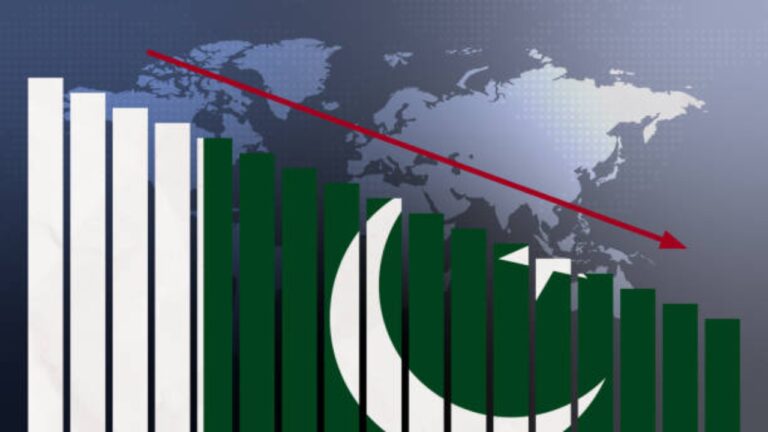New Delhi: The International Monetary Fund (IMF) has expressed serious concerns about Pakistan’s ability to repay its debts, especially to global financial institutions themselves. The IMF’s assessment was made public as an aid team arrived in Pakistan on Friday to discuss new relief packages under the Extended Fund Facility (EFF) at the request of Islamabad.
“Pakistan’s ability to repay its funds is at significant risk and remains highly dependent on policy implementation and timely external financing,” said an IMF staff report published earlier this month. The report further states that slow implementation of reforms, high public debt and aggregate financing needs, low aggregate reserves, net foreign exchange derivatives position of State Bank of Pakistan, declining inflows and socio-political factors.
The report emphasizes that restoring external viability is critical to ensuring Pakistan’s ability to repay the fund, and this depends on strong policy implementation such as external asset accumulation and exchange rate flexibility. did. Although there has been some reduction in uncertainty surrounding the global financial situation since the last review, geopolitical instability was also cited as an additional source of risk.
According to the IMF, Pakistan will require total financing of $123 billion over the next five years, with $21 billion expected to be sought in fiscal year 2024-25, $23 billion in fiscal year 2025-26 and $22 billion in fiscal year 2026-27. It is. , $29 billion in 2027-2028 and $28 billion in 2028-29.
The IMF-supported team will work with Pakistan’s finance team to collect data from various sectors on the first phase of the upcoming long-term financing program and discuss the upcoming 2025 fiscal year (2025) budget, sources said. will be discussed based on the results. With Ministry of Finance officials. The team will be in Pakistan for over 10 days.
Pakistan has decided to seek a debt rollover of about $12 billion from key allies such as China in the 2024-25 financial year to make up for a $23 billion shortfall in external financing. Treasury insiders say they estimate that $5 billion will be carried over from Saudi Arabia, $3 billion from the UAE and $4 billion from China, and that next fiscal year’s budget will include further new loans from China. Stated.
The country is expected to receive more than $1 billion from the IMF under the new loan program, in addition to new loans from the World Bank and Asian Development Bank. The federal government aims to meet budget targets before the IMF review mission is expected to arrive in Pakistan, and negotiations on a new loan program are expected to begin in mid-May ahead of the budget presentation in June. It is.
Despite narrowly avoiding default and experiencing some economic stability last summer, Pakistan continues to face large fiscal shortfalls and stagnant growth, with an expected external balance of payments deficit of around 2%. It is suppressed through import control mechanisms at the expense of economic growth. This year compared to last year’s negative growth.
“Pakistan’s ability to repay its funds is at significant risk and remains highly dependent on policy implementation and timely external financing,” said an IMF staff report published earlier this month. The report further states that slow implementation of reforms, high public debt and aggregate financing needs, low aggregate reserves, net foreign exchange derivatives position of State Bank of Pakistan, declining inflows and socio-political factors.
The report emphasizes that restoring external viability is critical to ensuring Pakistan’s ability to repay the fund, and this depends on strong policy implementation such as external asset accumulation and exchange rate flexibility. did. Although there has been some reduction in uncertainty surrounding the global financial situation since the last review, geopolitical instability was also cited as an additional source of risk.
According to the IMF, Pakistan will require total financing of $123 billion over the next five years, with $21 billion expected to be sought in fiscal year 2024-25, $23 billion in fiscal year 2025-26 and $22 billion in fiscal year 2026-27. It is. , $29 billion in 2027-2028 and $28 billion in 2028-29.
The IMF-supported team will work with Pakistan’s finance team to collect data from various sectors on the first phase of the upcoming long-term financing program and discuss the upcoming 2025 fiscal year (2025) budget, sources said. will be discussed based on the results. With Ministry of Finance officials. The team will be in Pakistan for over 10 days.
Pakistan has decided to seek a debt rollover of about $12 billion from key allies such as China in the 2024-25 financial year to make up for a $23 billion shortfall in external financing. Treasury insiders say they estimate that $5 billion will be carried over from Saudi Arabia, $3 billion from the UAE and $4 billion from China, and that next fiscal year’s budget will include further new loans from China. Stated.
The country is expected to receive more than $1 billion from the IMF under the new loan program, in addition to new loans from the World Bank and Asian Development Bank. The federal government aims to meet budget targets before the IMF review mission is expected to arrive in Pakistan, and negotiations on a new loan program are expected to begin in mid-May ahead of the budget presentation in June. It is.
Despite narrowly avoiding default and experiencing some economic stability last summer, Pakistan continues to face large fiscal shortfalls and stagnant growth, with an expected external balance of payments deficit of around 2%. It is suppressed through import control mechanisms at the expense of economic growth. This year compared to last year’s negative growth.

